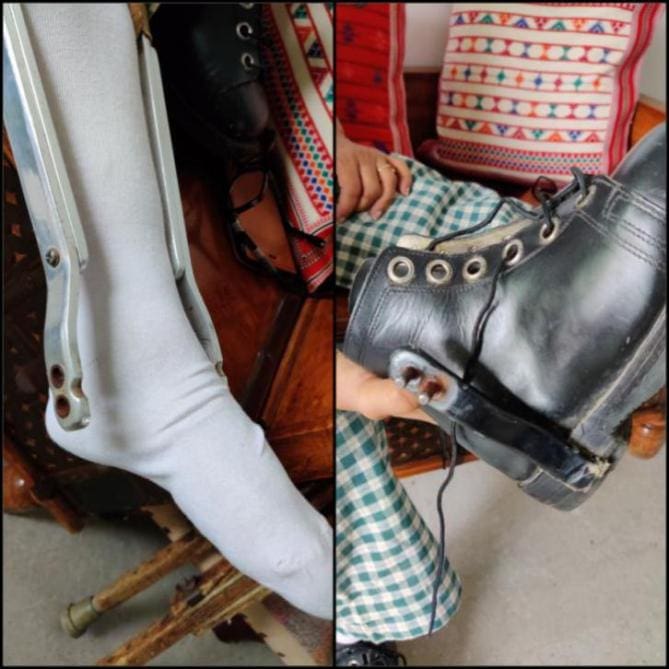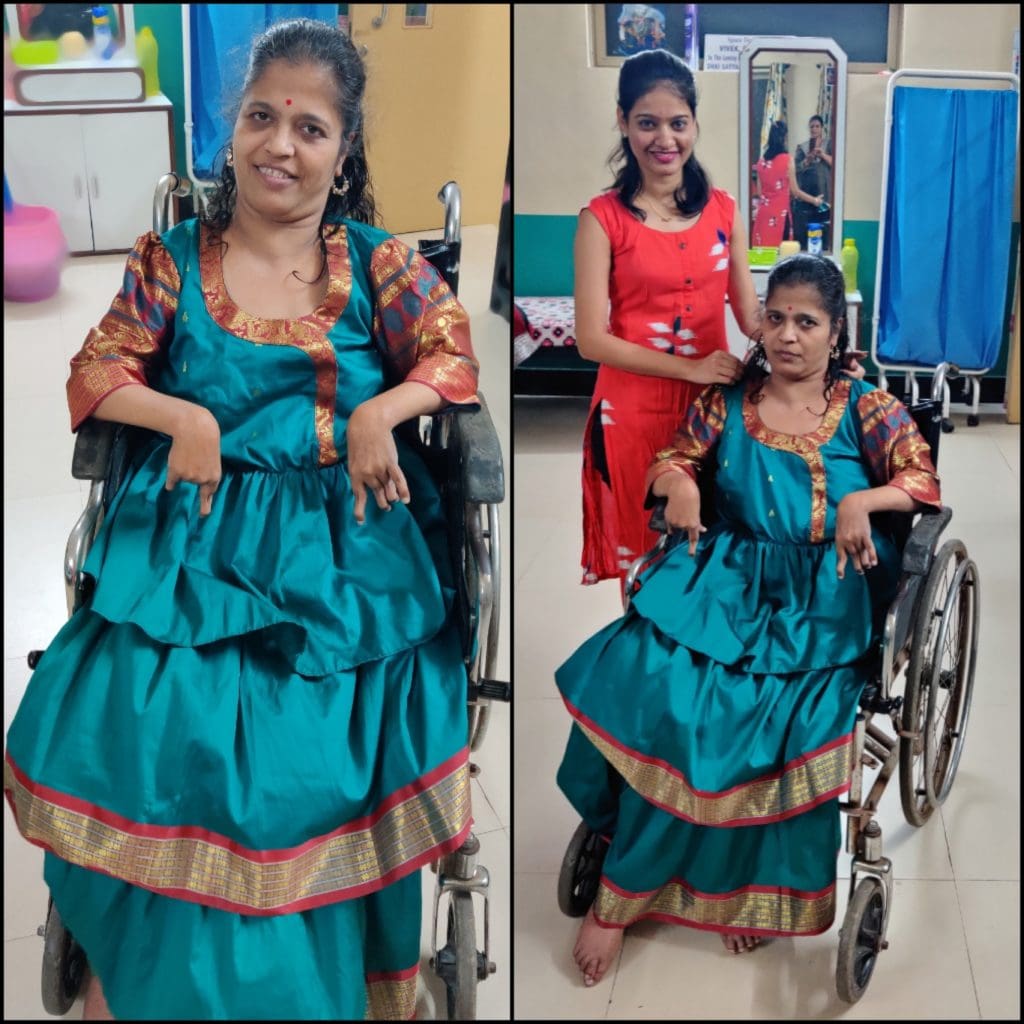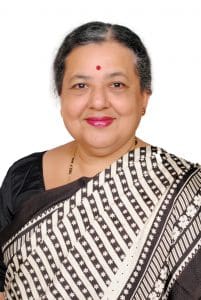Introduction
Clothing is a complex but fascinating part of an individual’s life (Tuteja, S., Nigam, V., 2017). It plays a vital role in the coordination of human traits. Clothing plays an important role not only for normal individuals but in the life of a disabled individual too; as it helps in the development and growth of physically challenged person. Clothing can hide physical defects and give aesthetic pleasure to the wearer through its special features (Kishore, N., Rukhsana, Pandey, R., 2010). Disabled people require both genuine care and social sensitivity. Most people with physical disabilities want clothing that is attractive in appearance, comfortable, functional and easy to manage, safe, and easy to care for. If a disabled person is able to manage to dress himself, it may help him to gain confidence and independence. Most people with physical disabilities want clothing that is attractive in appearance, comfortable, functional and easy to manage, safe, and easy to care for (Brown, P. J., 1993). It is important to understand that differently abled people also require clothing that is comfortable and essentially functional. If physically impaired person wears clothes that restricts movement or causes discomfort, it can be frustrating for the wearer.
Clothing helps to minimize the appearance of disability, for that one needs to select appropriate clothing (Rusk, H. A., and Taylor, E.J., 1953). It is important for two reasons; one being that functional clothing is designed and constructed according to the physical handicap, reduces dependence on others for dressing and undressing. The other being that socially accepted clothing, reduces perceptional deviance and promotes positive interaction that encourages the social and personal adjustment of the individual. Self-help garments not only promote self-dressing but also camouflages the deformity of the handicap, improve ability to perform physical activities and allow them to be self-sufficient. Clothing has become more than protection and adornment for disabled people; it satisfied deep psychological needs by providing satisfying experiences (Clulow, E., 1974). Simplicity, sensitivity and an eye for detail is probably key to aesthetic and practical clothing for specially-abled (Dr. Tavawalla B., 1994). Specially designed functional clothes with self-help features may help them to overcome clothing related problems. The quality of life for disabled and elderly people can in many cases be substantially improved by a better choice of good looking and functional clothing and other textile products (Meinander, H., and Varheenmaa, M., 2002).
This study was undertaken to review the practical considerations while designing for the specially abled in general. As an experiment, a garment was designed that was suitable for a wheelchair bound woman as per her taste and requirement.
Considerations in adaptive clothing
Consideration of physical comfort and safety, convenience and care, function and ease of dressing and attractive appearance are all equally important. On a practical perspective of physical comfort, for loose or adjustable waistlines; elastic is the option as it allows for expansion. But if it is too tight, it can restrict blood circulation. Soft fabrics that do not irritate or rub the skin such as natural fabrics that breathe are a good choice. On a perspective of safety, garments that fit closely to the body; are less likely to get caught in wheelchairs or other equipment, and are less likely to be a fire hazard near candles, fireplaces, heaters and stoves. Proper selection of garment lengths that prevent entanglement in wheelchairs, braces, or other appliances. Flame resistant fabrics are also useful for individuals who have limited mobility. On a perspective of convenience and care, nylon tricot and polyester knits in undergarments are strong and quick drying, but may wrinkle in laundry at high temperatures. Disposable incontinence products may save time, but often cost more than reusable. On a perspective of function and ease of dressing, clothes with easy-to-manage fasteners and closures such as velcros, zippers and magnetic buttons are helpful as shown in fig. 1.

https://money.cnn.com/2017/10/18/news/tommy-hilfiger-fashion-line-people-with-disabilities/index.html
Fig. 1. Velcros and magnetic buttons in clothing
Similarly, ease or fullness in the shoulder area give room for shoulder action when pushing wheelchairs or using braces. Larger armholes and sleeves and necklines to get on and off for better function. On a perspective of attractive appearance, printed fabrics have the potential of camouflaging drooling and other soiling stains. Cheerful colors and patterns lift the spirits. Strongly contrasting patterns and bright colors emphasize the parts of the body they cover; can be used to accent best features. Silhouettes and trims to make different and beautiful patterns. Decorative trims are selected and applied to enhance the aesthetic appeal but not essential to garment function and performance.
Allergy like Tetraplegia an excessive perspiration problem, use of cotton, wool and cellulosic fibres may be the answer. Problems caused by impurities such as dye stuffs, finishing agents, dirt are they irritate sensitive skin especially if the skin is abraded. On the other hand, a totally unfinished material has poor fabric handle properties and is uncomfortable to wear. Fibres that are known to give allergic reactions are wool, raw silk, rubber and nylon. Static charges and sparks when undressing synthetic clothes can indirectly and sometimes may cause sudden, uncontrolled movements in a person which might prove to be a risk.
Understanding individual needs
MBA (Mutually Beneficial Activities) Foundation that aims at providing a life with self-esteem and dignity to differently abled individuals in Airoli, Navi Mumbai is an NGO working for the integrated rehabilitation for people with special abilities. MBA Foundation was visited in order to understand and identify the problems that may occur concerning clothing and textiles for the physically challenged individuals. An interaction with the teachers helped gain some ideas to provide them with appropriate dress styles that can be as comfortable as possible for their daily lives. An interview with fashion and textile industry advisor and consulting psychologist Ms. Geeta Castelino helped gain valuable inputs. These helped understand the commonly faced problems with clothing. Physically challenged people find knotting at the waist a challenge. So elastic at waist was preferred. They had been trained to button and unbutton and deal with other fasteners like zippers and velcro. Magnetic buttons on the hands can be used for easy dressing. Those who have super sensitive skin were discouraged from wearing synthetic materials; only natural fibre fabrics are suitable for them. Calipers should be detached with shoes so that they can wear anything they want by removing shoes as seen in Fig. 2.
 Fig. 2. Detachable calipers
Fig. 2. Detachable calipers
In managing incontinence, use of diapers regularly was inevitable; although it can on prolonged use, irritate the skin. Polypropylene is a fibre with unusual properties; it permits the passage of liquid through the fabric without the fabric itself becoming wet, and the skin is thus kept dry. The fabric is permeable to air; there is none of the stickiness associated with protective garments made from plastic or rubber. People with physical disabilities preferred loose clothes, such as palazzo and trousers as they have clips around legs.
Specially-abled people of all age groups can find the process of dressing and undressing a laborious task. The process of rehabilitation cannot be complete without making them independent in dressing and undressing. Also, clothing a disabled child is a major problem faced by many parents and care-givers. Meeting the clothing needs of disabled in choosing suitable clothing, as well as making them independent to dress and undress is either a frustration or challenge for such parents. It is very important to notice their facial expressions and judge them as sometimes they cannot speak for themselves. Observation is a must in some cases.
Designing for the specially abled
The motive of the experiment was, to become aware of their problems with clothing and to fulfill their desire of wearing clothes of their choice. The person selected for the experiment was a woman having a cerebral palsy disorder and was wheelchair bound. The woman’s ability of movements was found to be feeble and she always needed a care-taker’ help for dressing and undressing. But it was observed that she had a desire towards aesthetic garments such as beautiful silhouettes with vibrant colours and trims. She was asked to select a design by showing photos and illustrations from the Internet. An Indo-Western gown was designed with modification in style and adaptation, as in Fig. 3. A traditional Indian saree was chosen to be up-scaled into a gown as desired. Neckline of the gown was made wider, with a zipper opening on the back and elastic at the waist. This was to make it comfortable for the person and also easier for the care-taker. Considering aesthetic appearance, trims were given on the neckline, fancy buttons on the front, saree borders on sleeves and at the bottoms in Fig. 4. This experiment gave an exciting opportunity to design and develop a gown for the specially abled. This was a satisfying experience.
 Fig. 3. & Fig. 4. Design of Adaptive Clothing – Designed by Sampada Surve
Fig. 3. & Fig. 4. Design of Adaptive Clothing – Designed by Sampada Surve
Need for social inclusion
Specially abled individuals’ needs are even greater than others; because they need special designs and adaptation for comfort and convenience to increase their ability for becoming independent. Garment must be functional with comfort, fit and allow mobility. Aesthetically designed garments can boost their self-esteem. Providing options through magazines or catalogues, to know what colour or patterns they desire can give them a sense of inclusion. Brands like Tommy Hilfiger, Marks & Spencer have an adaptive clothing line. There are shopping facilities available for them in the market. But many times they have to make alterations for fit or comfort. Local shops, supermarkets or tailors can customize as per their requirements.
Western countries have been conducting adaptive fashion shows such as, New York Fashion Show, highlighting fashion for people with disabilities and Zappos Adaptive’s Fashion Show. Adaptive fashion shows have been held in India too. Ad-Dress Now was an exclusive and inclusive show of an adaptive fashion organised by Pune based by Ekansh Trust on 18th August, 2019. The idea was to design clothes for people with a disability to encourage independence. In the show, models exuded confidence in their specially designed clothes. A team from Pune won the first prize for unique QR code app with braille to understand colour and pattern for visually impaired people.
MBA foundation, Airoli also held a fundraiser event and wheelchair ramp show named STRIDE for raising awareness and to mark the International Day of the Specially-abled on 5th December, 2018 as seen in fig. 5. Special Emphasis was on inclusion of differently abled people in this show. With young achievers and their Children with Different abilities showcased their talent to promote the cause. India’s leading designers showcased their collection. This initiative was highly appreciated by the audience and the participants. Another Fundraising event that gained them dignity was held on 5th May, 2019 by Le Mark School of Art and Design, as a social responsibility of creating awareness about adaptive clothing.
 Fig. 5. Adaptive Fashion Show ‘ STRIDE’ at MBA Foundation
Fig. 5. Adaptive Fashion Show ‘ STRIDE’ at MBA Foundation
Every human being has a right to wear satisfactory clothes to look good and to feel good. Specially designed clothing encourages independence. Functional, comfort with aesthetics, independence and safety should be taken into consideration. Uncomfortable clothes can take away the enthusiasm of living. It can restrict a person’s activities and put one at a disadvantage, thus giving a feeling of dependency, inferiority complex and frustration.
Conclusion
The clothing needs of every differently abled individual requirement changes from person to person. The goal of designing apparel must be to contribute to the independence of a person with disability. While making garments, detail orientation and minor to major points need to be considered like allowance for free movements, using breathable fabric and fasteners that are easily handled. A problem with ready-to-wear clothing usually requires extensive alteration to improve fit. Accessibility and clothing has to go hand in-hand. The specially abled individuals need special designs and adaptation for comfort and convenience. They must also be attractive in appearance, functional and easy to manage, safe and easy to wear and care. It should also help them become independent. A person should feel beautified with what they are wearing. In turn it can also contribute to an increase in confidence and self-esteem. Hence functional and aesthetic has to go together. Similarly, clothing should be convenient to wear by themselves and provide the perception of physical as well as mental comfort. There is a need to understand their perspective of clothing as representation of special clothing. There is a need to sensitize the society about the problems specially abled person could face. Fashion industry also needs to be more attentive towards adaptive clothing.
Acknowledgement: The Author expresses her gratitude to Dr. Suman Mundkur, Former Associate Professor, Textiles and Apparel Designing, for the guidance, encouragement for the experiment and editing this article.
References:
Kishore, N., Rukhsana and Pandey, R. (2010): Clothing requirements of physically challenged college going boys and designing suitable garments. Asian Journal of Home Science Vol. 5. No.1.
Brown, P.J. (1993): Clothing ideas for people with special needs. Iowa State University Extension Publication, Iowa.
Tuteja, S., and Nigam, V. (2017): Assistive clothing designs for mentally retarded. International Journal of Research- Granthaalayah, Vol. 5, Issue 6.
Clulow, E. (1974) Clothes for the handicapped. Journal of the Royal College of General Practitioners.
Rusk, H. A., and Taylor, E. J. (1953) Living With Disability. Garden City, New York: The Blakiston Company, Inc.
Dr. Tavawalla, B. (1994), Clothing for physically handicapped children. Research paper of M S University, Baroda.
Barton, D. H. (1972) Self-help clothing in Brown, P.C. (1977), Clothing problems of Physically Disabled Persons in Public Contact Employment. M.Sc Dissertation, Textas Tech University. pp.19-23.
Varheenmaa, M., Meinander, H. & Mamalis, (2000) Clothing and textiles for disabled and elderly people
EASYTEX deliverable 5. 3. Project Report. VTT Chemical technology and CLOTEFI S.A.
Lamb, Jane M., and Kallal, M. Jo. (1992), A Conceptual Framework for Apparel Design, Clothing & Textile Research Journal, Volume 10, Issue 2.
Carroll, Kate. (2015). Fashion and Disability. in Gwilt, Alison, (ed.) , Routledge: Abingdon, England.
Kernaleguen, Anne. (1978) Clothing designed for the handicapped, University of Alberta Press: Edmonton, Canada.

Ms. Sampada Girish Surve, B.Sc. Textiles & Apparel Designing, SVT college of Home Science, SNDT Women’s University, Mumbai- 400 049. Intern at Textile Value Chain

Dr. Suman Mundkur, Retd. Associate Professor, Textiles and Apparel Designing, SVT College of Home Science.

